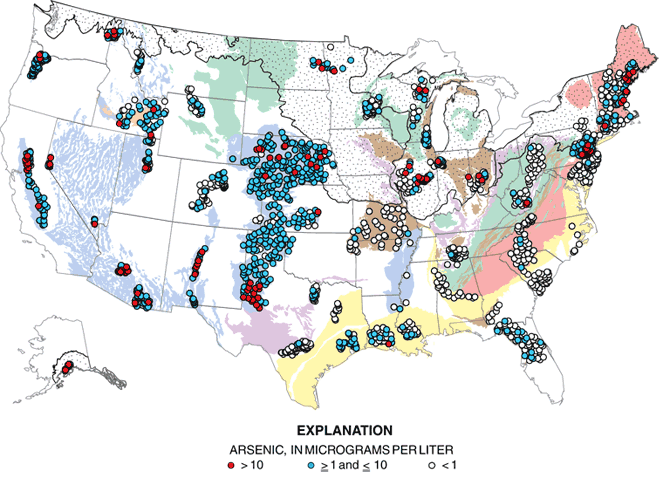
Arsenic (As) is the 20th most
abundant element in the Earth’s crust. It is used in the
production of metal alloys, manufacture of insecticides,
pressure treatment of wood and as treatment for certain
medical conditions. The contribution of arsenic to the
groundwater from man-made sources is low. Most of the
problems arise from natural deposits. Water often passes
through many layers of rock on its way to the water table. In many cases, conditions are right for water to pick up
arsenic along the way.
For removal of arsenic in drinking water the
preferred method that is highly effective is reverse osmosis
(RO). Reverse osmosis drinking water systems are very
reasonably priced and can be easily maintained by the
average homeowner.
See recommended reverse osmosis systems for arsenic removal
in well drinking water.
See specialty water filters designed for arsenic removal.
Arsenic map of contaminants in drinking water as
reported by the
USGS.

Concentrations of arsenic were
greater than the U.S. Environmental Protection Agency
Maximum Contaminant Level of 10 micrograms per liter in
about 7 percent of wells nationally and were found at these
concentrations in wells from several aquifer types. >,
greater than; >, greater than or equal to; <, less than or equal to; <, less than.